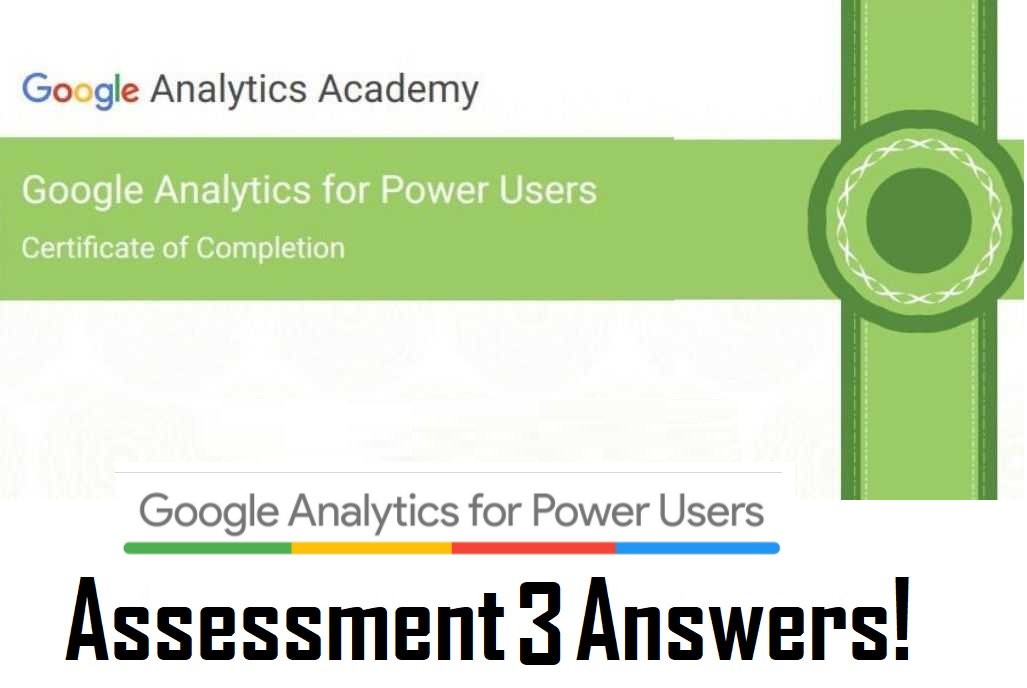Google Analytics for Power Users Assessment 3 Answers 2021
Are you searching for Google Analytics for Power Users Assessment 3 Answers? You're lending at the right place, here you will get 100% correct answers from the experts.
Google Analytics For Power Users Assessment 3 Exam Answers, you with a total of four questions from the 1st module. These are questions including the topics of “Which users are converting and which aren’t?”, “How can you see which platforms to develop or optimizing for?” The questions are including on simple basic concepts and you can easily clear them with our answers.
Google Analytics For Power Users Answers Assessment 3
Bookmark this blog for all your future answer references. Choose the correct answer highlighted with "Blue" text.
Google Analytics for Power Users Assessment 3 Questions and Answers
Q.1 – When Used As A Content Site KPI, What Does A High Average Time On Page Indicate About A Specific Page’s Performance?
- (A) Strong performance: Users are highly engaged with the page.
- (B) Poor performance: Users are struggling with the page.
- (C) It depends on the specific page and its purpose.
- (D) Average Time on Page should never be used as a KPI for a content site.
Q.2 – In What Scenario Would You Use A Custom Metric?
- (A) To track the number of minutes played for each video on your site
- (B) To find out the average number of pageviews per user
- (C) To see how often a page was the landing page for sessions including that page
- (D) To record the title of a video watched on your site
Q.3 – What Can Be Used To Measure Scroll Depth In Google Analytics?
- (A) A custom dimension.
- (B) Event tracking.
- (C) Scroll Depth is a standard Google Analytics metric.
- (D) It’s not possible to track scroll depth with Google Analytics.
Q.4 – When Tracking Both Ecommerce And Goals, What Are Two Ways To Analyze Page Value Based Only On Ecommerce? (Select Two)
- (A) Use a table filter to exclude goal pages.
- (B) Define a segment to exclude sessions where a goal occurred.
- (C) Create a view that tracks ecommerce but doesn’t define any goals.
- (D) Assign goal values based on average revenue calculated outside of Google Analytics.
Q.5 – Assuming That Ecommerce Tracking And/Or Goals Are Configured, Which Of The Following Analytics Reports Does NOT Show Conversion Rates?
- (A) Landing Pages
- (B) All Pages
- (C) Source/Medium
- (D) Mobile Overview
Q.6 – What Are Two Benefits Of The Reverse Goal Path Report? (Select Two)
- (A) Discover common goal paths you may not have considered.
- (B) Identify top goal paths and optimize navigation or messaging for even more conversions.
- (C) Identify drop-off points between steps in various goal paths.
- (D) Automatically track conversions without manually configuring goals.
Q.7 – How Could You Compare The Conversion Rate For When The “About Us” Page Was Viewed Versus When The Page Was Not Viewed?
- (A) Compare “About Us” page metrics in the Landing Pages report with “About Us” page metrics in the All Pages report.
- (B) Identify the Page Value for the “About Us” page and compare this metric across all other pages.
- (C) Create a custom segment including sessions with visits to the “About Us” page, and another segment for sessions where users did not visit the “About Us” page. Apply the two segments to the Ecommerce Overview report and compare conversion rates.
- (D) Use the Reverse Goal Path report to compare a number of goal completions among rows including the “About Us” page.
Related Posts:


Comments
Post a Comment